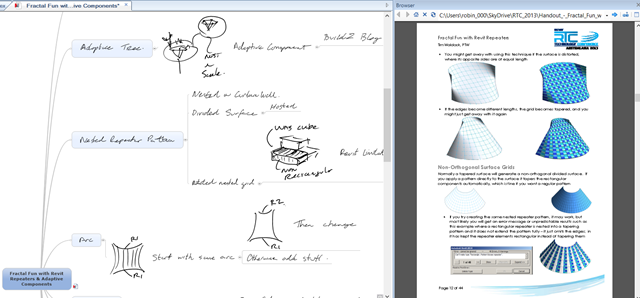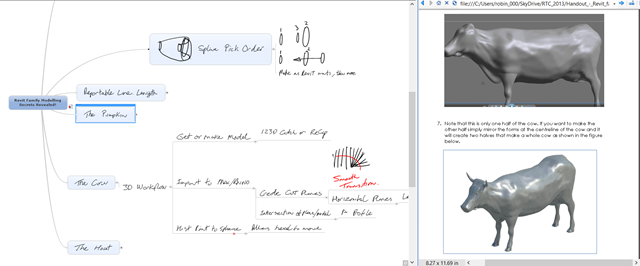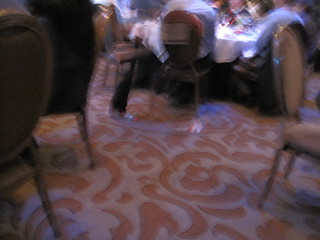RobiNZ at #RTCAUS 4 – Three speakers, three approaches
One of the joys of the Revit Technology Conference is the variety of content offered. Sessions include technical demonstrations, hands on labs, discussions and reviews of industry. The problem is you can’t see all the sessions. I’m going to cover a some I attended in the next few posts. Unfortunately that means omitting many brilliant sessions, some I saw, others I heard about from other attendees so hope those speakers are not offended by omission.
Three sessions I attended demonstrated different approaches to getting what you want, what you need, sometimes what you don’t need, out of Revit:
- Exploit Revit features in a new way
- Work with Revit in a completely out of the box way
- Use Revit strengths, but work outside it when that’s the best option.
Tim’s Fractals, all the way down
Tim Waldock (aka revitcat) spoke at the first Auckland RTC back in 2007 and has been a regular ever since. His 2013 class was actually prompted by questions from his 2012 RTC sessions. It applied the principles of fractals, nested repeating patterns, to Revit’s repeater and adaptive component functions.
With a series of increasingly complex examples he demonstrated the benefits, pitfalls and reasons to try this approach. It was great to see an almost academic Revit investigation then applied to real world models from a simple nested panel fence to spectacular model of Gare do Oriente, Lisbon by Santiago Calatrava.
I also like his practical “do this, not that” approach to some of the technical foibles discovered when pushing repeaters and adaptive components to the limit. Even with his comprehensive hand-out as a reference was I was busy taking notes!

Marcello the Revit’lutionary:
Marcello’s approach to Revit is brilliantly off the wall although one session did include showing how to add walls, even doors and windows, to a Revit Cow. Before you go looking for c o w related acronyms that refers to an actual cow model, as in Moo, not some new type of Revit geometry engine.
I attended Marcello’s “Family Modelling Secrets Revealed!” and part two of “Scaling Families” (I had to miss part one because of that inability to be everywhere thing). He doesn’t just make remarkable things in Revit, he makes Revit do remarkable things.
The approach is very much outside the box, acknowledging the way Revit works then exploiting it to get results that initially appear impossible. One simple example showed how to create an inverted extrusion by letting Revit create a standard 3 profile extrusion then dragging the last profile back into the previous two. A simple way to make a jet engine cowling for your Revit 747…
I suspect Marcello’s motto is “The difficult can be done immediately. The impossible takes a little longer”.

Aaron ‘Socks’ Maller
One of the pre-RTC delights was following Aaron Maller’s journey to the conference. He arrived a few days before and discovered how wonderful the South Island is driving from Queenstown to Christchurch, before flying to the Auckland RTC event. His Facebook posts and tweets were a joy to follow, worthy of a NZ Tourism promotion award if such a thing exists.
Although Revit whiz, pushing it to the limits, in one session Aaron shared a few projects which took another approach. Use Revit for what it excels at, then don’t use it at all. One example was a complex modular roof structure. Revit was used to model the site, set out the structure layout, geometry and feed an array of 3D points to Inventor. With the help of an Inventor whiz they used it to generate the production model and component drawings used to produce the structure. Other examples included use of Revit with Rhino and a custom “point extraction” utility.
I like the idea of exploiting Revit for it’s strengths while acknowledging there are times to look to using those strengths with other platforms.

And Socks? At the RTC dinner Aaron was presented with some very special striped toed socks which related to his antics at a previous RTC.
I only got this ghostly shot as he dashed past my table in stripey socked feet but you can see a better photo, and read his take on RTCAU, on his own blog.





